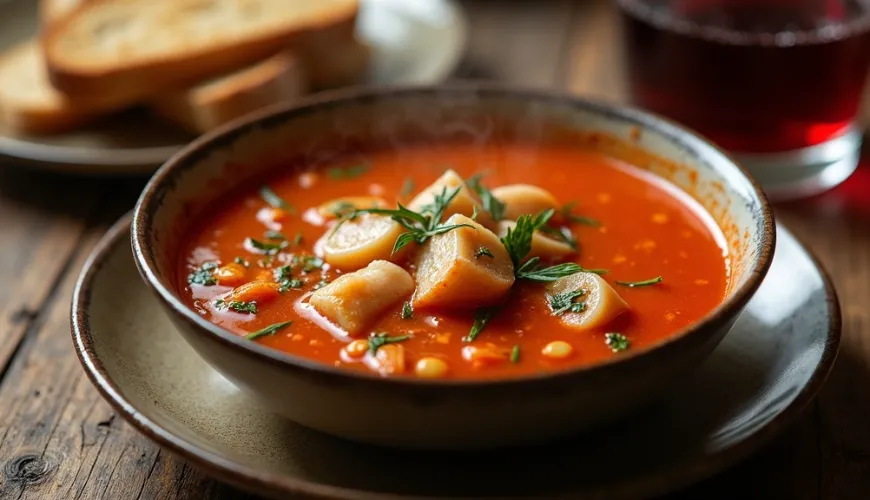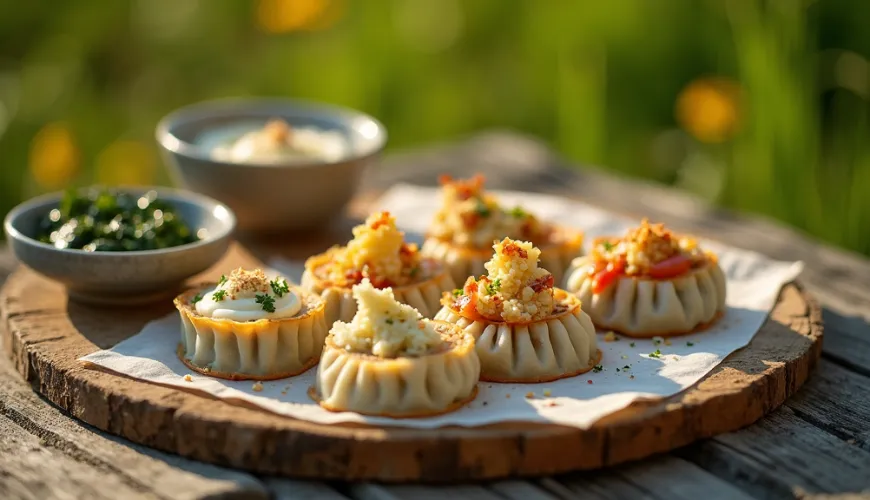
Dim sum as a healthy and sustainable choice for your table

Dim sum, a magical combination of two words that translates from Cantonese to "touch the heart," embodies exactly what a good dish should offer: delicacy, variety, sharing, and joy. This traditional way of serving small, often steamed, fried, or stuffed dishes originates from China, specifically from the southern Canton region. In recent years, however, it has become popular in Europe as well, and it's no wonder – dim sum dumplings can thrill both lovers of Asia and those who want to step away from classic European cuisine for a moment.
Dim sum as a cultural ritual, not just food
In traditional Cantonese culture, dim sum is closely associated with the tea ritual known as yum cha. In tea houses in Hong Kong or Guangzhou, friends and families gather in the morning to enjoy several dozen small dishes with a cup of strong jasmine or pu-erh tea – including the world-famous steamed dumplings, fried rolls, delicate cakes, and vegetable rolls. Dim sum is not just about food; it is a social event.
"It's about sharing. When a family gathers around a table with bamboo baskets full of different flavors, it creates space not only for food but also for conversation, laughter, and closeness," says the chef of the Chinese restaurant Din Tai Fung, renowned worldwide for its precise preparation of dim sum dumplings.
Dumplings that bend the rules
Among the most popular varieties are steamed har gow dumplings with delicate rice flour dough filled with shrimp. Their translucent structure and delicate consistency are a sign of culinary mastery. Similarly popular are siu mai, open dumplings made from wheat dough with pork and shrimp, often garnished with a piece of carrot or caviar.
Vegetarian versions are also gaining popularity – for example, dumplings filled with shiitake mushrooms, Chinese cabbage, or tofu, offering rich flavor without the use of meat. In modern restaurants, you will commonly encounter fusion variations today, where classic fillings are complemented by ingredients such as avocado, sweet potatoes, or tempeh. And here lies the potential for creativity – dim sum dumplings are no longer exclusively an Asian affair.
Sustainability on the plate
With the growing interest in a healthy lifestyle and ecology, dim sum is also becoming a subject of various sustainable approaches. Many enthusiasts and professional chefs have started modifying traditional recipes to meet vegetarian, vegan, or gluten-free requirements. Wheat dough is replaced with a mixture of rice and tapioca flour, fillings focus more on local, seasonal ingredients, and steaming replaces frying, which is gentler not only on the ingredients but also on oil consumption.
An example is a Czech food blogger inspired by a visit to a dim sum market in Kuala Lumpur and began creating her own versions with red lentils, sauerkraut, and mushrooms at home. The result? Dumplings that not only taste great but also make sense in terms of locality and nutrition.
How to prepare dim sum at home?
Although the preparation of dim sum dumplings may seem complicated, it actually requires more patience than a high level of expertise. It is important to choose the right ingredients, have a steamer on hand – preferably bamboo – and not be afraid to experiment.
The basis of most recipes is the dough, which can be made from plain flour and hot water or a combination of rice and tapioca flour for a gluten-free version. The filling is purely up to imagination – from the classic mix of minced meat, shrimp, and ginger to a combination of Hokkaido pumpkin, fresh coriander, and coconut milk.
Interestingly, shaping dim sum dumplings is an art in itself. In Cantonese cuisine, there are dozens of types of folds and wrapping – from simple folds to intricate knots. However, if one starts with the simple half-moon variant, they will soon find it is primarily about practice.
Tip: Steam the dumplings on perforated paper or a cabbage leaf to prevent sticking to the bamboo basket. And don't forget the sauce – for example, a soy-sesame sauce with a drop of chili or sweet and sour plum sauce.
Dim sum as part of a lifestyle
Today, we perceive dim sum not only as a culinary experience but also as part of what we might call a mindful way of eating. Shared portions, small amounts of individual dishes, emphasis on freshness and balance of flavors – all of this aligns with the principles of a healthy and sustainable lifestyle. Moreover, if we decide to cook at home, we have full control over the origin of the ingredients, the amount of salt, and the quality of the fats.
Whether you decide to visit an authentic Chinese restaurant or create your own steaming ritual at home, dim sum has the ability to transform an ordinary day into something extraordinary. In a time when our time is increasingly divided between work, obligations, and the digital world, dim sum – and especially dim sum dumplings – offers the opportunity to pause for a moment. To sit down at a table, share with others, and appreciate not only the taste but also the moment itself.
As the famous Chinese poet Su Dongpo said: "Food without company is like wine without fragrance." And that is the true magic of dim sum – it touches not only the stomach but also the heart.

